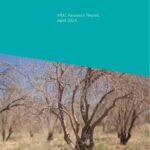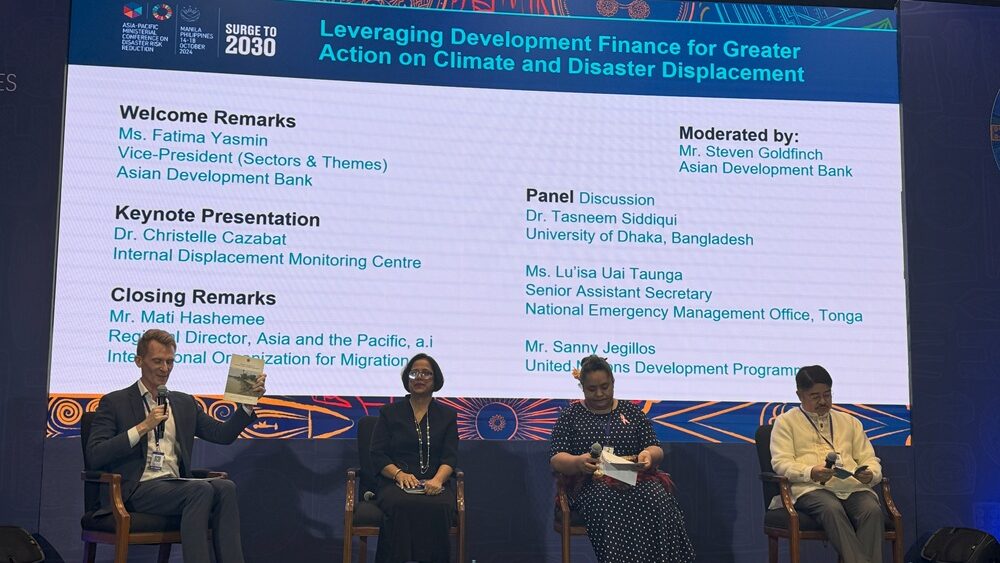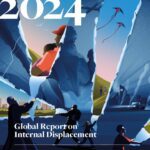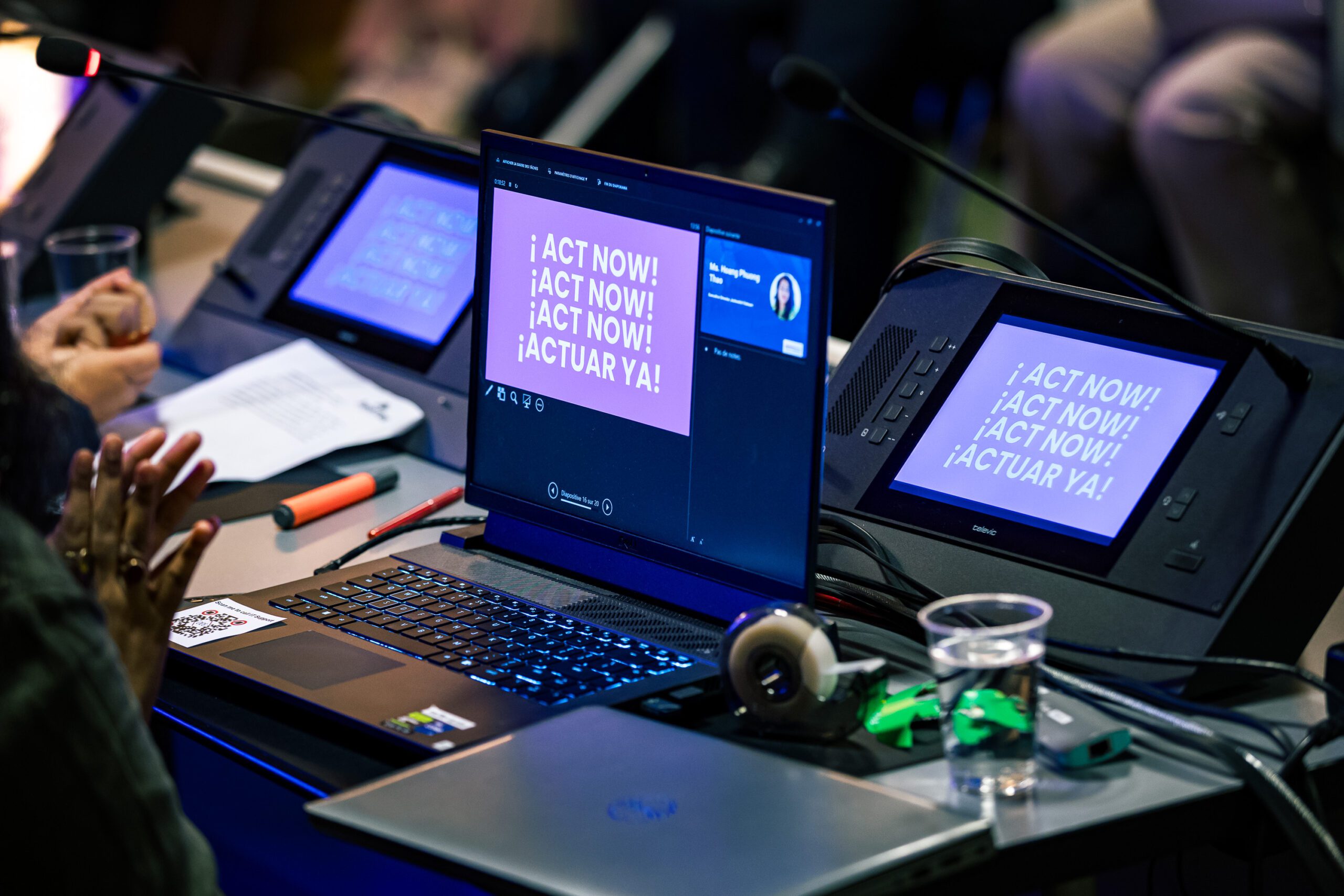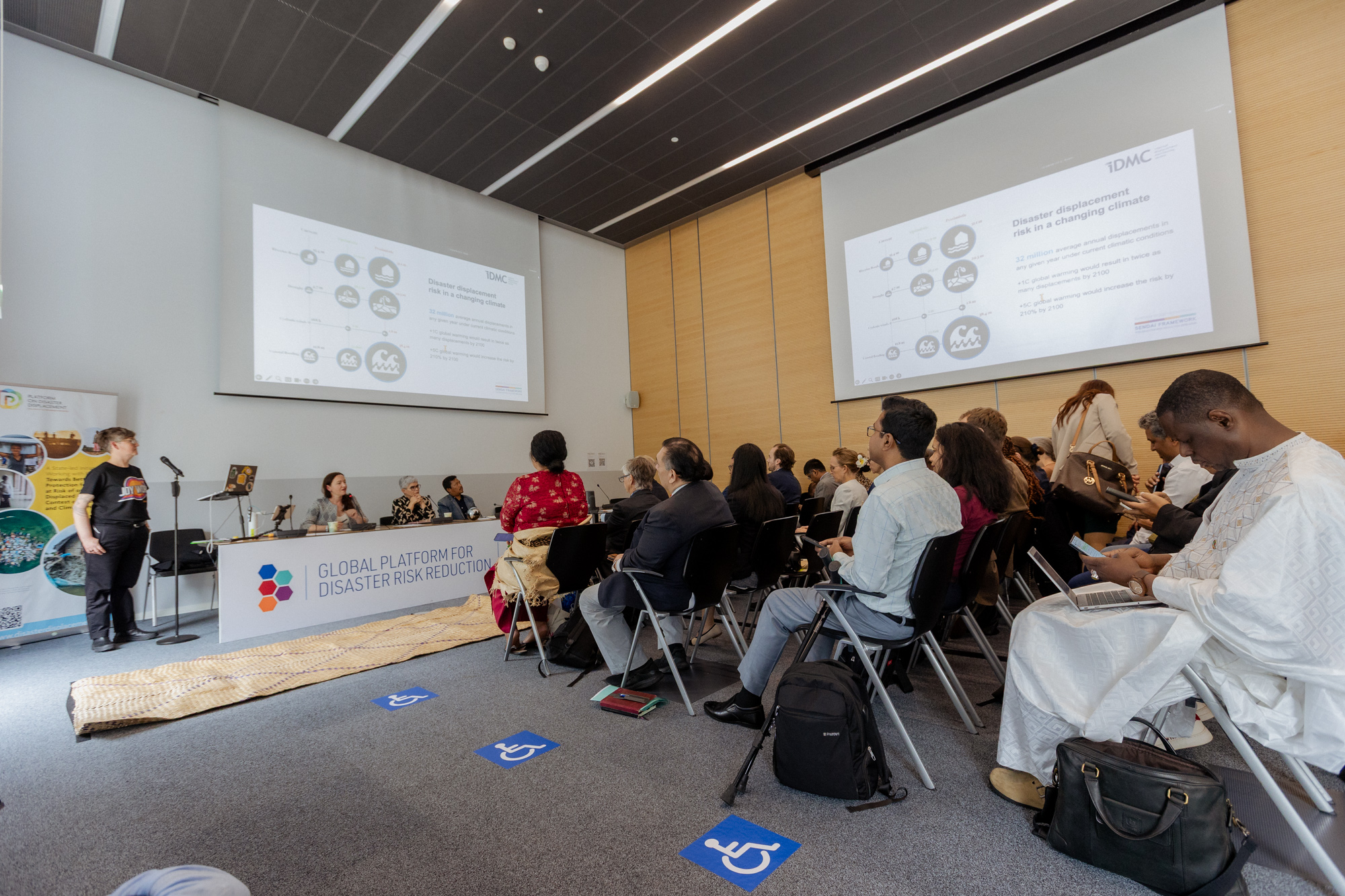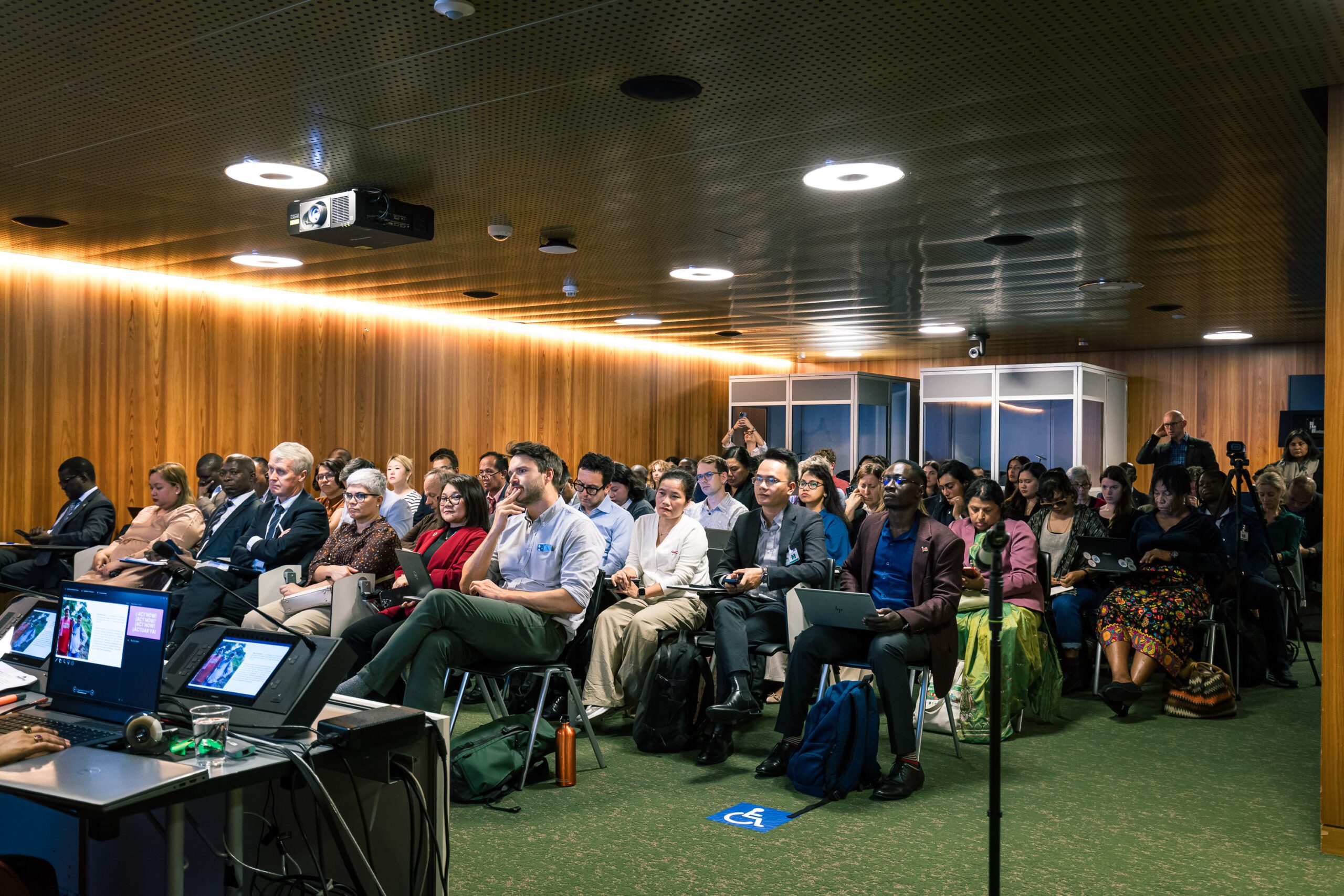Harnessing Development and Climate Finance to Address Internal Displacement in the Context of Disasters and Climate Change
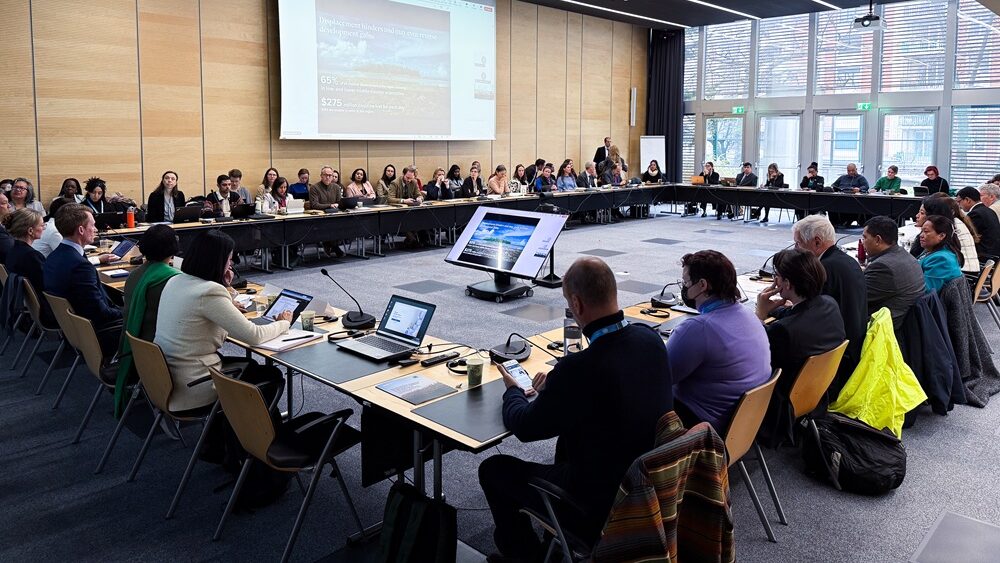
Geneva, Switzerland, 5 February 2025: The Internal Displacement Monitoring Centre (IDMC), the Asian Development Bank (ADB) and the Platform on Disaster Displacement (PDD) organized an in-person event at the Varembé Conference Centre (CCV) titled ‘Harnessing Development and Climate Finance to Address Internal Displacement in the Context of Disasters and Climate Change’ on 5 February 2025.
Ms. Alexandra Bilak, Director of IDMC gave opening remarks followed by a presentation by IDMC’s Head of Programmes Dr. Christelle Cazabat on the joint report by IDMC and ADB titled Harnessing Development Financing for Solutions to Displacement in the context of disasters and climate change in Asia and the Pacific. This was followed by a panel discussion moderated by ADB’s Senior Disaster Risk Management Specialist Mr. Steven Goldfinch. The panelists included Professor Tasneem Siddiqui, from the University of Dhaka and also a member of the PDD’s Advisory Committee, the African Development Bank’s (AfDB) Principal Fragility and Resilience Officer Mr. Jerome Berndt and the newly-appointed Director of the Santiago Network on Loss and Damage Ms. Carolina Fuentes. The closing remarks were given by Mr. Samuel Tumiwa, ADB’s Representative to North America.
In her opening remarks, Ms. Alexandra Bilak highlighted that while many displacements in the context of disasters and adverse effects of climate change are preemptive evacuations and of temporary nature, many people remain displaced for prolonged periods of time. She emphasized that protracted, repeated or definitive displacement can have long-term consequences, jeopardizing people’s livelihoods, access to education, long-term health and the future of displaced people’s families. The report showed before this background that multilateral development banks (MDBs) can play a crucial role to enable states to ensure national ownership and responsibility for displacement inclusive policies.
The PDD plays a crucial role alongside member states to be in the driving seats and to be front and center of the response to disaster displacement because it is absolutely essential that any solution and any financing mechanism going forward takes into account national ownership and national responsibility for displacement.” – Ms. Alexandra Bilak
Dr. Cazabat presented the findings and key messages from the joint report by ADB and IDMC, highlighting that in recent years, disasters have triggered more displacements than conflicts or violence. In 2023, disasters triggered 26.4 million displacements in 148 countries and territories as compared to 20.5 million conflict-induced displacements in 45 countries.
With 9.5 million likely to be displaced by disasters in any given year across the Asia Pacific region, the estimated economic loss alone will amount to over USD 275 million for each day that people cannot work due to their displacement. This is not to mention the non-economic impact on affected people and their families.” – Dr. Christelle Cazabat
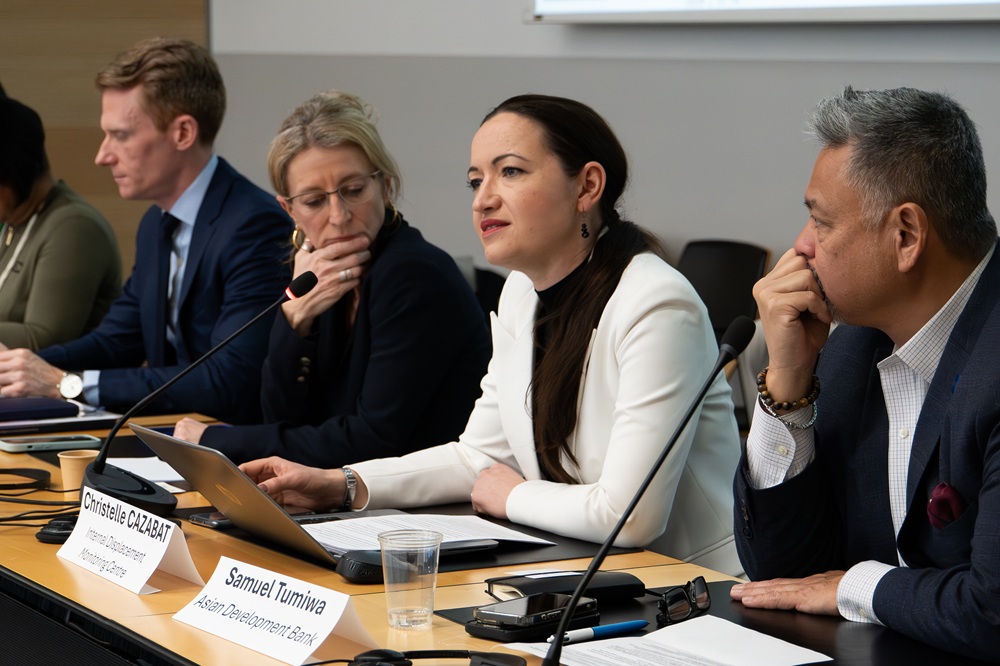
Dr. Cazabat highlighted that, while humanitarian responses are essential for addressing immediate needs of displaced persons, MDBs should apply development finance for building long-term resilience of the affected communities. She further stressed that these interventions by MDBs must be anchored in national development and policy frameworks, many of which are already in accordance with international commitments such as the Sendai Framework for Disaster Risk Reduction. Better data on the gender, age, disability status and livelihoods of the displaced persons are urgently needed to inform action.
Multilateral development banks have extensive experience in investing in disaster risk reduction and strengthening communities and systems for resilience against natural hazards and disasters. This can be leveraged in support of persons and communities displaced by disasters.”– Dr. Christelle Cazabat
Panel Discussion
The panel was moderated by Mr. Steven Goldfinch who highlighted that,
When we looked at the development architecture of countries on the demand-side including national development plans, there were countries that had some reference to displacement, but some just mentioned it as a problem but not necessarily a priority. Hence, without proper articulation, it’s very difficult for development partners to respond to the challenges and priorities that are identified by a country.”
As the first panelist, Professor Siddiqui was asked to share the experience of Bangladesh in developing its internal displacement strategy. She highlighted its collaborative development across a large number of governmental and non-governmental stakeholders. Nine ministries in Bangladesh formed a taskforce and formulated the strategy, and a total of 27 ministries are now actively involved in its implementation.
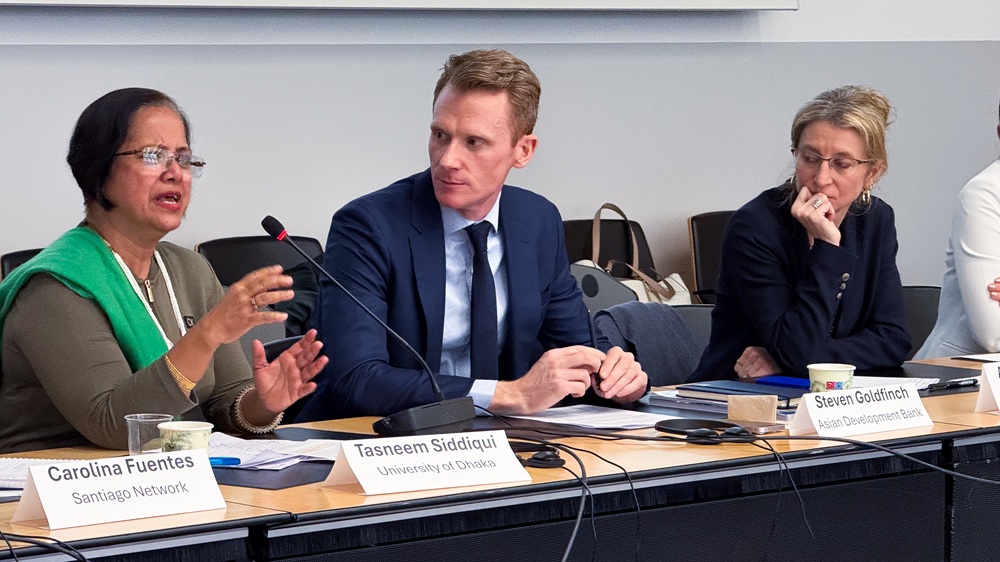
The strategy has gained international attention, with Climate Vulnerable Forum countries requesting it as a template to design their own frameworks. She highlighted that the strategy is a rights-based document covering all three stages of displacement- prevention, protection and durable solutions.
Under the PAMAD project supported by Norad and in collaboration with IOM and RMMRU (Refugee and Migratory Movements Research Unit), Bangladesh is carrying out policy review, mapping of displacement, and reviewing capacity building of different government departments.” – Professor Tasneem Siddiqui
Professor Siddiqui also highlighted that the importance of recognizing that addressing disaster displacement in the long term is a development issue, and she encouraged key stakeholders to work towards greater policy coherence in this process.
The second panelist, Mr. Jerome Berndt, was asked to shed light on the current strategy and approach of the African Development Bank on internal displacement in Africa. He described different initiatives and engagements through partnerships with IOM, UNHCR and the Red Cross Red Crescent Movement at the regional levels across Africa.
The African continent accounts for less than 4% of global emissions but it has already experienced a GDP loss of 5-8%. Africa needs USD 277 billion but receives only USD 30 billion.” – Mr. Jerome Berndt
The Director of the Secretariat of the Santiago network on loss and damage, Ms. Carolina Fuentes, presented how the SNLD can contribute to solutions to internal displacement in the coming years. Ms. Fuentes highlighted that the Santiago network was getting fully operational in 2025 and ready to address displacement as loss and damage as part of its mandate. The network’s goal is to enable the provision of technical assistance to governments and help them with the development of tools for operational responses to averting, minimizing and addressing loss and damage, including related to internal displacement and planned relocation. She envisions the SNLD playing a catalyzing role in bridging the gap between governments demanding technical assistance and experts and enablers including multilateral development banks who can provide that assistance.
The establishment of the SNLD is part of the recognition of the multilateral need to address specific vulnerabilities of people on the move. And this has also been addressed and recognized in various climate negotiations. This is an important gain for multilateralism and the landscape of support for loss and damage that is being established in the context of the Climate Convention.” – Ms. Carolina Fuentes
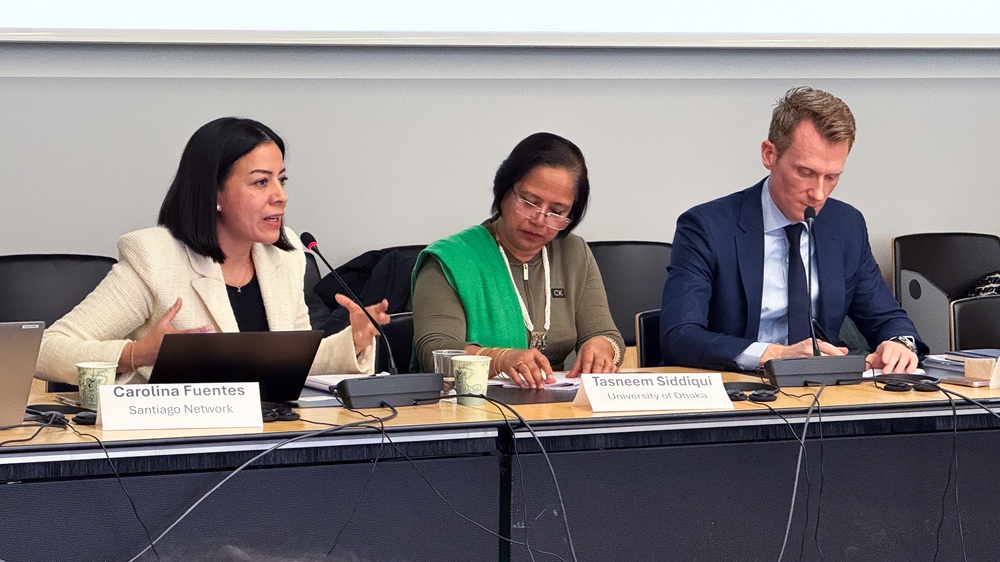
Ms. Fuentes also emphasized that the Santiago network will provide context-specific technical assistance to different governments based on their individual needs which can span from financial needs such as the requirement of development finance to policy needs which can include developing national strategies.
The work of the Santiago Network is context-specific and demand-driven. Requests are eligible when they come from developing countries as a result of a consultative process, demonstrate a need in loss and damage, do not duplicate work and address a gap at the national level. The Santiago network is also open for requests developed by communities.
Effective practices by national governments
In the Q&A session, PDD’s Steering Group member Bangladesh inquired about the motivations of MDBs and international financing institutions (IFIs) for investment in long-term resilience in countries affected by disaster displacement. Panelists highlighted possible savings through investments in prevention of disaster displacement and measurable outcomes including poverty reduction.
The Philippines, also a PDD Steering Group member, highlighted that displacement is a development challenge and presented some effective practices and recent laws passed that support persons in vulnerable situations in disaster contexts. The Philippines is one of the world’s most climate-vulnerable countries and they have made great strides in coping with this including establishing the Disaster Response Operations Management, Information and Communication (DROMIC), and hosting the Fund for responding to Loss and Damage, among others.

